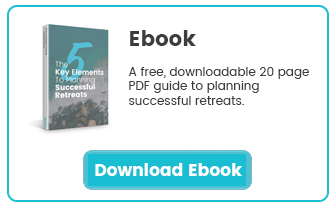How To Survey Students and Find Out What They Look For In A Retreat
As a teacher, leader, mentor, it's in your DNA to know how to guide your students on a retreat. Keeping their interests close, you use your intuition to craft a program that you feel will be a transformative experience. However, have you considered that this may be rooted in your own needs – what about theirs?
Empowering your students is at the core of what you do. In this post, we will take a look at how to survey them, so you can get to the bottom of what they look for in a retreat. Speaking to their needs means you can better craft an amazing experience that they keep coming back for.
What Are The Key Elements of Planning Successful Retreats?
Timeline planning • Selecting your venue • Itinerary & program design • Sustainability considerations • Marketing • Financials & profitability • Legal forms & liabilities • Insurance
Tips On How To Survey Your Students
Survey Channels
You can survey people in a number of ways that span across various channels. Of course, having a face to face conversation is one of the most valuable ways to nurture the bond you have with your students.
However, unless you are sitting with pen and paper at the ready, you’re going to miss out on having recorded information that you can go back to.
You’ll also need to be prepared to set aside enough time to get valuable responses from your conversations. Have a list of questions you’d like to know the answers to at the ready. Keep them fairly general; you don’t want to bombard students with complex questions that require too much thought.

The better alternative, where you can sit with the answers and spend some mulling over the responses to understand your students' needs, is to do this online. Your students may appreciate the fact that they can go over the questions in their own time, and carefully consider their responses.
This way, you can also ask more in-depth questions without putting them on the spot.
Google forms and Facebook offer two of the simplest tools to compile your survey. Which one you use really depends on how in-depth you want to go and where you think your students are most likely to respond to you.
An email link to a google form is great for reaching out to people in your database, but what happens if you want to access the greater online community? Facebook may be your best bet then. And what if you feel that respondents are going to want to respond anonymously? In this case, using a tool like Survey Monkey would be the answer.

How To Create A Survey On Google
When considering how to survey your students, Google forms is easy to use all round. Nearly everyone is familiar with the suite of services and know how to find their way around it.
Open your Gmail account menu and select forms. You’ll get the option to either create a brand new one, or use a template. From there, fill out the title, description, questions, add multi-media, etc. as your heart desires.
When the questionnaire is ready to send out, email the link to the form to your students. As they submit their responses, the answers will be populated into a google spreadsheet that you can access.
How To Create A Facebook Survey
If you feel that Facebook is the ideal space for you to survey your students, set it up by typing in survey into the search bar. Select the free survey app from the results. It will run you through writing the questions, inserting thank you text, and finally closing the survey.

What Questions To Ask and How To Ask Them
Now is the time to let go of your expectations and be open to discovering what it is your students are looking for in a retreat.
The questions you ask will be based upon your objectives for creating the survey. For example, is your goal to open the conversation up to the floor and get people's opinions to shape the entire retreat experience? Or is your focus on simply refining a particular aspect of it?
While multiple-choice questions make it simpler for the students to answer what you ask, they won't necessarily deliver the insights that you're missing out on. An open-ended question where the respondent can supply an answer in their own words might produce useful information that you hadn't considered before.
To get the most from your survey, it's beneficial to include both types of questions. Start with the multiple-choice, yes/no type questions, and then move onto the open-ended ones. Giving your students the chance to warm up into the more thoughtful ones means there's a greater chance they'll complete the survey.
Keep in mind that everyone has something going on; they’re busy with life’s daily demands. Be conscious of this when considering how to survey, and make sure that the questions you ask are easy to answer and understand.
At the outset, mention how long it will take to fill out the questionnaire. Aim for something that’s not longer than 5 minutes. You don’t want to make everyone feel like they’re gearing up for a test! Before hitting send, give the survey a once over, or ask a friend to proofread it for errors and simplicity.

Analyzing The Responses
For the measurable, quantitative results, it’s possible to see right away what scores high or low. The simple solution here is to consider how you can improve on the low scores you receive. For example, if students feel that the accommodation is a bit too rustic, you immediately know that it’s time to upgrade it.
The open-ended responses aren't quite as simple to break down. You might be able to group the answers into several categories, for example, accommodation, meals, retreat program, transport, etc. From there, have a look through the points to consider what you can action.

Ending Off
It may take time for people to respond to you, but it doesn’t mean that you should give up. Keep asking, and let them know that you’re ready to listen and really get to know what it is that they are looking for in a retreat.
New resources, straight to your inbox
We’re committed to your privacy. WeTravel uses the information you provide to us to contact you about our relevant content, products, and services. You may unsubscribe at any time.





